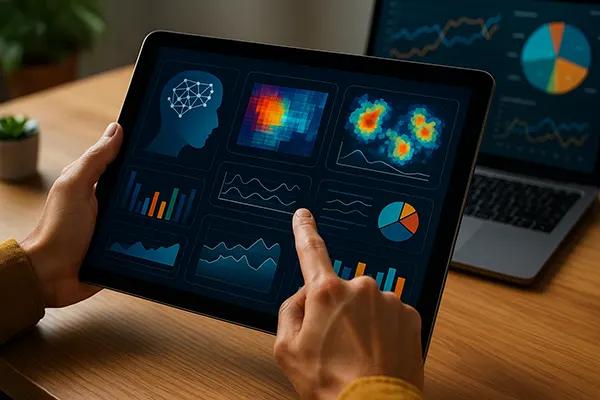
Artificial Organs and Biointerfaces: How Software Developers Should Prepare for the Age of Cyborgisation
By 2025, humanity stands on the threshold of a new era in which the boundaries between biology and technology blur. Artificial organs, brain–computer interfaces (BCIs), and sensory prosthetics are no longer the stuff of science fiction—they are a developing industry combining biotechnology, hardware engineering, and advanced software. For developers, this transformation opens vast opportunities but also brings new ethical, security, and technical challenges that require deep interdisciplinary understanding.
The 2025 Landscape of Artificial Organs and Biointerfaces
Artificial organs and neural implants have advanced rapidly in recent years, driven by companies such as Neuralink, Synchron, and Precision Neuroscience. Neuralink’s latest implant, tested in human trials since 2024, allows users to control cursors and robotic devices with brain signals, while Synchron’s Stentrode interface provides a minimally invasive neural link through blood vessels. Beyond neural systems, artificial hearts like those from Carmat and soft-tissue bioprostheses have moved toward full commercialisation, offering hope to patients with chronic organ failure.
The field of biointerfaces is also expanding into sensory augmentation. Developers are experimenting with retinal prosthetics that restore partial vision and cochlear implants that connect directly to digital audio processors. Such technologies depend heavily on reliable signal processing software, making developers central to the evolution of human enhancement technologies.
In parallel, research groups are working on bidirectional biofeedback systems—interfaces that not only read neural signals but also deliver sensory feedback. This makes precise real-time programming crucial, requiring expertise in low-latency communication protocols and bio-signal calibration algorithms.
Key Programming Skills for the Cyborg Era
Software developers entering this domain must master real-time signal processing, adaptive algorithms, and secure medical data transmission. Unlike traditional applications, BCI and prosthetic systems require millisecond-level responsiveness, often implemented through real-time operating systems (RTOS) and custom low-level firmware.
Knowledge of biomedical data standards such as HL7, DICOM, and FHIR is also becoming indispensable. Developers need to integrate biological sensors and actuators while maintaining strict compliance with medical safety standards, including ISO 13485 and FDA cybersecurity requirements for connected devices.
Equally important is the ability to work with bio-signal libraries and open-source frameworks. Tools like OpenBCI and BrainFlow provide APIs for EEG and EMG data, enabling developers to prototype neural interfaces or biometric monitoring systems without proprietary constraints. A developer versed in Python, C++, and embedded systems programming can create custom applications that bridge human physiology with digital control systems.
Ethical and Legal Dimensions of Cyborgisation
As technology integrates with the human body, ethical concerns intensify. Data from implants can reveal emotions, cognitive states, or even personal preferences, raising deep questions about privacy and autonomy. Regulatory frameworks in 2025 are evolving—both the EU’s Artificial Intelligence Act and new biomedical data protection laws classify neural data as highly sensitive, requiring encryption and explicit consent protocols.
Software developers are therefore no longer just engineers—they are also custodians of human identity. Implementing anonymisation mechanisms, secure storage, and differential privacy models is as vital as ensuring functionality. Moreover, the concept of “cyber-biological security” has emerged, referring to the protection of biological devices from digital threats such as remote hijacking or malware injection into prosthetics.
Legal systems also grapple with the definition of bodily autonomy in the era of augmentation. Who owns the data generated by a neural implant—the patient, the manufacturer, or the healthcare provider? Developers working in biomedical software must design transparent data flows and ensure traceability through audit logs and secure APIs to maintain compliance and trust.
Developers’ Role in Balancing Innovation and Responsibility
Building ethical AI for biointerfaces requires a balance between innovation and responsibility. Engineers must ensure that algorithms interpret neural patterns without bias and that hardware integration respects biological safety limits. This means extensive testing under ethical review and collaboration with medical professionals, neuroscientists, and ethicists.
Transparency in algorithmic design is becoming a core expectation. Developers should document data sources, model assumptions, and safety constraints to comply with regulatory audits. Open science collaborations and public research repositories can help mitigate the risk of monopolisation and promote equitable access to medical technology.
Most importantly, developers must remember that the ultimate goal is to enhance human life, not replace it. Software should empower users with control, privacy, and consent, ensuring that augmentation remains an expression of human freedom rather than technological dominance.

Practical Development: From Open-Source Tools to Real Prototypes
Practical experimentation is already possible thanks to open-source ecosystems. Developers can work with the OpenBCI platform, using Raspberry Pi or Arduino boards to collect EEG or EMG data through affordable sensors. Such setups allow for prototyping real-time applications that respond to muscle or brain activity, helping bridge theory and practice.
Libraries like MNE-Python and BioSPPy support bio-signal analysis, while TensorFlow and PyTorch are applied for pattern recognition and adaptive control models. These frameworks enable the creation of prosthetics that learn from the user’s movements and refine control precision over time through reinforcement learning techniques.
Moreover, Raspberry Pi-based prototypes can be connected to actuators or robotic limbs through GPIO and Bluetooth Low Energy (BLE) communication. This not only allows developers to simulate medical-grade interfaces but also to explore latency, data synchronisation, and safety issues firsthand—skills crucial for future biomedical software engineers.
Preparing for the Future of Human–Machine Integration
The age of cyborgisation demands multidisciplinary collaboration. Developers must engage with biotechnologists, neurosurgeons, and data scientists to co-create systems that function safely within human biology. Understanding both hardware limitations and physiological parameters is now as vital as writing efficient code.
As artificial organs and implants become mainstream, software will serve as the invisible bridge that connects body and machine. From heartbeat regulators to thought-controlled limbs, developers will define how these systems communicate and adapt. Their role will expand from coding to shaping the ethical and experiential framework of future human existence.
By embracing openness, security, and empathy, developers can ensure that the age of cyborgisation becomes not a dystopian vision, but a responsible and empowering chapter of technological evolution.


